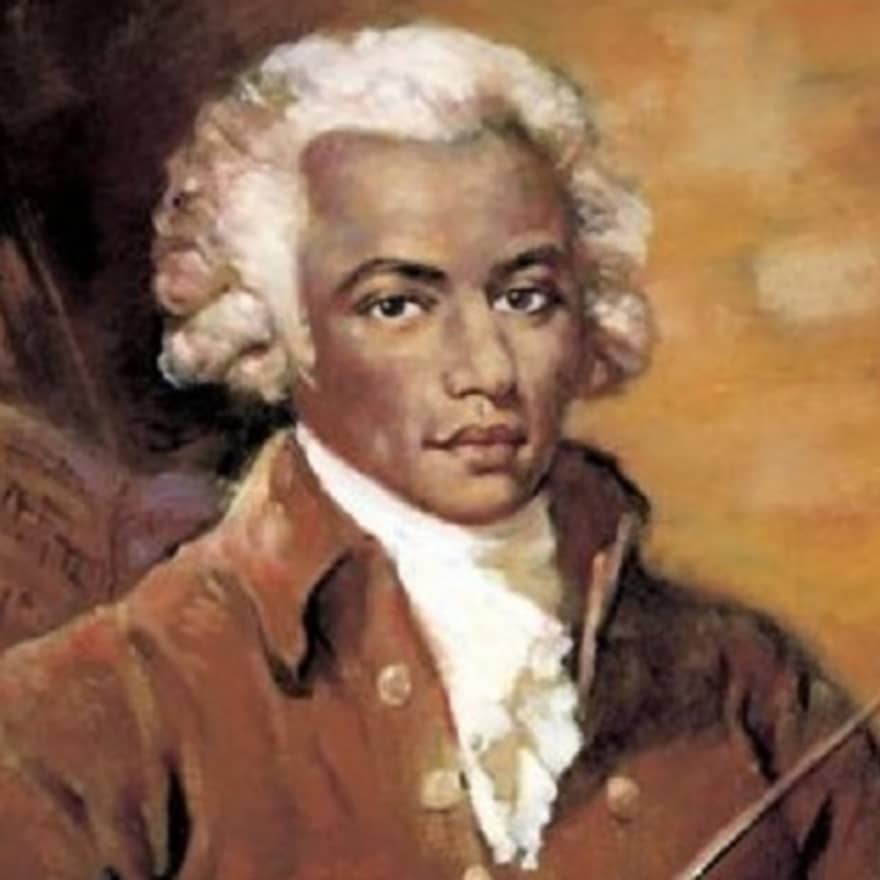Central Artist: Joseph Bologne

Welcome! My name is Lindero Hanna, and this is my blog about my selected artist, Joseph Bologne. Known as the Chevalier de Saint-Georges, he was a remarkable 18th-century composer, violinist, and conductor who made significant contributions to classical music. Born in Guadeloupe in 1745, Bologne became one of the first classical composers of African descent in Europe, breaking barriers in a time of great social inequality.
His music blends influences from French, Italian, and African traditions, showcasing his talent and versatility as a composer. Bologne's compositions include symphonies, concertos, and operas, which reflect his innovative style and mastery of the violin. In this blog, I will explore his life, musical achievements, and the lasting impact he has had on the world of classical music.
1. Opera l'Ernestine
This is tale of star-crossed lovers who must sacrifice for one another to gain their ultimate bliss; the Scena is a dramatic moment of self-reflection for the eponymous heroine in which she redoubles her faith for her beloved. This is one of six operas that Joseph Bologne composed during his life. This piece is iconic to Joseph Bologne seeing that it was his very first opera in his career. This piece premiered on July 19, 1777, as Comedie-Italienne. This piece was accompanied with a libretto by Pierre Choderlos de Laclos, though it unfortunately did not survive the premiere. Ernestine has been considered extraordinary and has been sung in multiple languages including French and English.
2. Paris Symphonies
Under Bologne's guidance, the Paris Symphonies orchestra premiered in 1786 expanding Bologne's career. The Paris Symphonies by Joseph Haydn reflects the influence Mozart has on both of the artist. The Paris Symphonies comprise of six symphonies which were commissioned by the Count D'Ogny, Grandmaster of the Maonic Loge Olympique. These symphonies are among the most famous works of the Austrian maestro. The six symphonies comprise of Symphony No. 82 in C"L'Ours", Symphony No. 83 in G minor 'La Poule', Symphony No. 84 in E-Flat, Symphony No.86 in D, Symphony No. 87 in A.
3, Gossec's orchestra Concerts des Amateurs
In 1769 Joseph Bologne became a member and later leader of Gossec's orchestra Concerts des Amateurs which made his debut as a virtuoso violin soloist in 1772. Gossec established the Concert des Amateurs in 1769, and it quickly established itself as one of the best orchestras in Europe. Gossec led performances of his own symphonies, which he had composed expressly for this orchestra, each of his four years as director. In his final season with the Concert, he became the first conductor in France to lead a Haydn symphony.Gossec joined Simon Leduc and Pierre Gaviniès as co-directors of the Concert Spirituel in 1773, and he served in that capacity until 1777. He continued to be affiliated with the Opéra while overseeing the performances of Grétry, Gluck, and Piccini pieces; in 1775, he was given the title maître de musique.
4. Violin Concerto in A major Op. VII no. 1
Joseph Bologne's numerous symphonies concertantes, which are compositions for multiple instruments that blend elements of a symphony and a concerto, represent some of his most significant achievements. His early two-movement pieces had a major impact on the genre and on other works in this distinctly Parisian style. Typically, two soloists share melodies, resulting in a genuine musical exchange. Mozart even acknowledged Bologne's influence by using a similar leaping cadential figure from the final movement of Bologne's Violin Concerto in A Major, Op. VII No. 1.
5. Symphony No. 1 in G Major Op. 11
6. L'amant Anonyme
The story centers on a suitor who, afraid of being rejected, keeps his identity hidden from his love interest while expressing his feelings through gifts, notes, and anonymous gestures. The joys and challenges of his situation are skillfully portrayed by the duo and trio. Ballet is woven throughout the narrative, reflecting the spirit of the time. This opera, Bologne's third, premiered in 1780 at the theater of the Marquise de Montesson, the private theater of the Duke of Orleans' wife, who appointed Joseph Bologne as the music director of her theaters and provided him with residence in the ducal palace.
Thanks for hanging out with me as we explore Joseph Bologne, the Chevalier de Saint-Georges!
References
Listening guide: Joseph Bologne. Tafelmusik. (2022, April 7). https://tafelmusik.org/explore-baroque/articles/listening-guide-joseph-bologne/Sheet music by Francois-Joseph Gossec. Artaria Editions. (n.d.-a). https://www.artaria.com/collections/gossec-francois-joseph-1734-1830
Sheet music by Francois-Joseph Gossec. Artaria Editions. (n.d.-b). https://www.artaria.com/collections/gossec-francois-joseph-1734-1830
Symphony no. 1 in G Major, Op. 11. Symphony No. 1 in G Major, op. 11 | Runyan Program Notes. (n.d.). https://www.runyanprogramnotes.com/node/471
Wikimedia Foundation. (2023, August 9). Violin concerto. Wikipedia. https://en.wikipedia.org/wiki/Violin_concerto

Welcome! My name is Lindero Hanna, and this is my blog about my selected artist, Joseph Bologne. Known as the Chevalier de Saint-Georges, he was a remarkable 18th-century composer, violinist, and conductor who made significant contributions to classical music. Born in Guadeloupe in 1745, Bologne became one of the first classical composers of African descent in Europe, breaking barriers in a time of great social inequality.
His music blends influences from French, Italian, and African traditions, showcasing his talent and versatility as a composer. Bologne's compositions include symphonies, concertos, and operas, which reflect his innovative style and mastery of the violin. In this blog, I will explore his life, musical achievements, and the lasting impact he has had on the world of classical music.
Sheet music by Francois-Joseph Gossec. Artaria Editions. (n.d.-a). https://www.artaria.com/collections/gossec-francois-joseph-1734-1830
Sheet music by Francois-Joseph Gossec. Artaria Editions. (n.d.-b). https://www.artaria.com/collections/gossec-francois-joseph-1734-1830
Symphony no. 1 in G Major, Op. 11. Symphony No. 1 in G Major, op. 11 | Runyan Program Notes. (n.d.). https://www.runyanprogramnotes.com/node/471
Wikimedia Foundation. (2023, August 9). Violin concerto. Wikipedia. https://en.wikipedia.org/wiki/Violin_concerto

Comments
Post a Comment